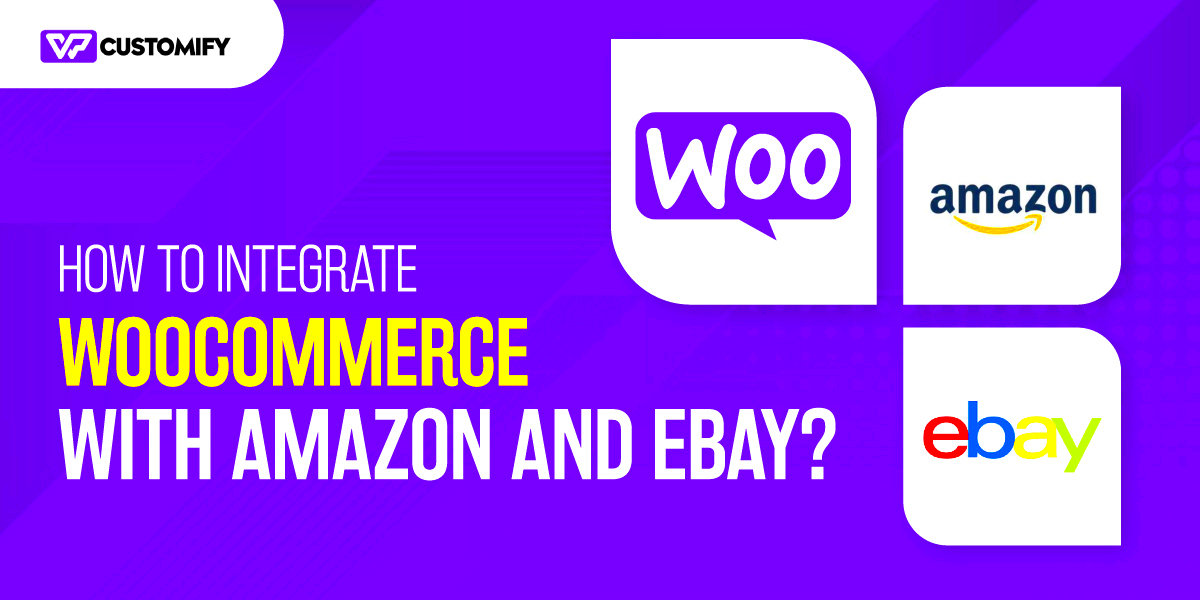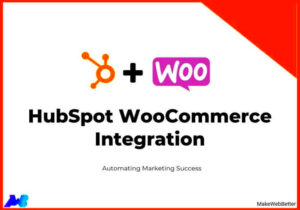Welcome to the digital age of selling! If you’re an entrepreneur or a small business owner looking to expand your online presence, then integrating WooCommerce with Amazon might just be the ticket. With WooCommerce powering over 28% of online stores worldwide and Amazon being the go-to marketplace for millions, combining the two can create a synergy that enhances your selling potential. In this post, we will explore how you can efficiently sync your WooCommerce store with Amazon to not only increase visibility but also streamline your sales process.
Benefits of Integrating WooCommerce with Amazon

Integrating WooCommerce with Amazon brings a myriad of advantages that can significantly elevate your e-commerce game. Let’s dive into some of the key benefits:
- Expanded Reach: By listing your products on Amazon, you gain access to millions of potential buyers who visit the site daily. This vast audience can dramatically increase your sales volume.
- Inventory Management: Integration allows for real-time inventory synchronization between your WooCommerce store and Amazon. This ensures that you won’t accidentally oversell items and helps manage stock levels efficiently.
- Centralized Orders: You can manage orders from both platforms in one central dashboard. This means less hassle and a seamless operational experience as you handle order fulfillment more efficiently.
- Increased Brand Trust: Selling on Amazon can bolster your brand’s reputation. Many consumers prefer shopping on trusted platforms, and having your products available on Amazon can increase customer trust.
- Data Insights: With integrated analytics, you can track the performance of your products more effectively, allowing you to make data-driven decisions to improve your sales strategies.
In summary, the benefits of integrating WooCommerce with Amazon can lead to enhanced efficiency, reach, and ultimately sales volume. If you’re serious about scaling your online business, this integration is worth considering!
Setting Up Your WooCommerce Store for Amazon Integration
Setting up your WooCommerce store for Amazon integration is a crucial step to ensure a smooth experience for both you and your customers. It can sound a bit daunting, but don’t worry! With the right approach, you can streamline your processes and expand your reach effortlessly.
First things first, start by ensuring that your WooCommerce installation is up-to-date. An outdated version can lead to compatibility issues with Amazon integration plugins. Here’s a quick checklist to get you started:
- Update WordPress and WooCommerce to the latest versions.
- Backup your site to prevent any data loss.
- Check your theme and plugin compatibility with the latest version.
Once your WooCommerce store is optimized, you’ll need to connect it with your Amazon account. Here’s how you can do it:
- Log into your Amazon Seller Central account and navigate to your settings.
- Choose ‘User Permissions’ and give access to the integration plugin you’re planning to use.
- Obtain the API keys and secret keys from Amazon.
Next, install your chosen integration plugin on your WooCommerce store. Some popular plugins include:
- WP-Lister for Amazon: Seamlessly list products on Amazon.
- Amazon WooCommerce Integration: Synchronize product inventory and manage orders from one place.
After installation, follow the plugin’s setup guide to link your store with Amazon. And voilà! Your WooCommerce store is now ready for Amazon integration!
Choosing the Right Plugin for Integration
When it comes to WooCommerce Amazon integration, choosing the right plugin is key to maximizing your efficiency and ensuring a smooth process. There are numerous plugins available, each with its unique set of features. So, how do you decide which one to go for?
First, take a look at what features you really need. Here are some essential functionalities to consider:
| Feature | Importance |
|---|---|
| Inventory Synchronization | High |
| Order Management | High |
| Multi-Channel Listing | Medium |
| Product Variation Support | Medium |
| Reporting and Analytics | Medium |
Next, review user feedback and ratings. High ratings and positive reviews often indicate reliability and effectiveness. Here’s a couple of plugins that are highly recommended:
- WP-Lister Pro for Amazon: Offers advanced features for serious sellers.
- Amazon Product in a Post Plugin: Great for bloggers and content creators.
Lastly, consider the support and documentation provided. Good support can save you time and headaches in the long run. Always choose a plugin that offers comprehensive documentation and responsive customer support.
By carefully selecting the right plugin, you can turn your WooCommerce store into a seamless Amazon selling powerhouse!
5. Step-by-Step Guide to Syncing WooCommerce and Amazon
Syncing WooCommerce with Amazon might sound a bit daunting, but it’s really about following a few clear steps. Ready to dive in? Let’s break it down!
- Choose the Right Plugin: First things first, you’ll need a plugin that bridges the gap between your WooCommerce store and Amazon. Popular options include WP-Lister for Amazon or Codisto. Make sure to research the plugin that best fits your needs.
- Install the Plugin: Once you’ve picked a plugin, go ahead and install it on your WooCommerce site. Navigate to your WordPress dashboard, click on Plugins, and then Add New. Search for your chosen plugin, install, and activate it.
- Connect Your Accounts: After installation, you’ll need to connect your WooCommerce account to Amazon. This will usually involve entering your Amazon Seller Central credentials into the plugin settings.
- Configure Your Settings: Most plugins will allow you to customize settings according to your preferences. This might include syncing product data, pricing, and order management options. Spend some time exploring these settings to ensure they align with how you want to sell.
- Import Products: With the configurations in place, you can start importing products from WooCommerce to Amazon. This is often as simple as selecting the products you wish to sync and hitting a button.
- Test Your Setup: Before going live, it’s always wise to run a few tests. This could mean checking that products appear as expected on Amazon and ensuring inventory counts are aligning on both platforms.
And voila! You’re all set to start selling on Amazon while seamlessly managing it through WooCommerce.
6. Managing Inventory Between WooCommerce and Amazon
Managing inventory between WooCommerce and Amazon doesn’t have to be a headache. In fact, with the right strategies and tools, it can be remarkably efficient. Here’s how to keep your inventory in check!
- Automated Inventory Sync: Invest in tools that provide automated inventory syncing between your WooCommerce store and Amazon. This ensures that any sale on one platform is immediately reflected on the other, preventing overselling.
- Set Reorder Alerts: Make use of reorder alerts in both WooCommerce and Amazon. Setting thresholds for when you need to reorder helps you avoid stockouts or overstock situations.
- Regular Audits: Schedule regular inventory audits to make sure your actual stock matches what’s recorded on both platforms. This helps pinpoint discrepancies that can arise from shipping errors or incorrect data entries.
- Utilize Reporting Features: Both platforms offer reporting tools that provide insights into sales trends and inventory levels. Use these features to make more informed purchasing decisions.
- Centralized Inventory Management Software: Consider a centralized inventory management system that integrates with both WooCommerce and Amazon. This can streamline processes and provide a bird’s-eye view of your inventory across channels.
By following these steps and tips, you can effectively manage your inventory between WooCommerce and Amazon, ensuring that your selling experience is both smooth and profitable.
Handling Orders from Both Platforms
Managing orders from both WooCommerce and Amazon can be a bit of a juggling act. However, with the right strategies in place, you can streamline the process and ensure that your customers receive their orders promptly and accurately. Here are some tips to effectively handle orders from both platforms:
- Centralized Order Management: Consider using an order management system (OMS) that integrates both WooCommerce and Amazon. This will allow you to see all your orders in one place, reducing the chances of errors and making your workflow more efficient.
- Consistent Inventory Updates: Sync your inventory levels regularly between both platforms. If a product sells on Amazon, it should automatically update your WooCommerce store, and vice versa. This helps prevent overselling and stockouts.
- Fast Fulfillment Strategies: Develop a fulfillment strategy that allows you to process orders quickly. Whether you’re using dropshipping, Fulfillment by Amazon (FBA), or shipping in-house, ensure you have the necessary systems in place to manage your shipping timelines effectively.
- Clear Communication: If there are any issues with an order, such as delays or inventory shortages, communicate clearly with your customers. Transparency builds trust and keeps customers informed.
- Track Performance Metrics: Monitor key performance indicators (KPIs) such as order processing time, shipment accuracy, and customer satisfaction levels. This data will help you improve your operations and enhance the customer experience.
By implementing these strategies, you can handle orders from both WooCommerce and Amazon more efficiently, ultimately leading to a better experience for your customers and a more streamlined workflow for your business.
Optimizing Your Listings for Both WooCommerce and Amazon
When it comes to striking the right chord between WooCommerce and Amazon, optimizing your listings is crucial. After all, both platforms have their unique quirks and best practices that can make or break your sales. Here’s how you can ensure that your listings shine on both platforms:
- Effective Keyword Research: Use tools like Google Keyword Planner or SEMrush to find keywords relevant to your products. Incorporate these keywords in product titles, descriptions, and tags on both platforms to improve search visibility.
- High-Quality Images: Invest in professional photography to create eye-catching images. Amazon is known for its rigorous image guidelines, so ensure your images are high-resolution and showcase the product from multiple angles.
- Compelling Descriptions: Write unique product descriptions that highlight the features and benefits of your products. For Amazon, be clear and concise, while on WooCommerce, you can be a bit more personable to align with your brand voice.
- Competitive Pricing: Regularly compare your pricing with competitors on both platforms. Utilize pricing strategies like discounts and coupons on WooCommerce to attract customers, while keeping an eye on Amazon’s pricing due to its competitive nature.
- Customer Reviews: Encourage satisfied customers to leave reviews. Positive feedback can significantly enhance your credibility on both platforms. On WooCommerce, consider implementing a follow-up email strategy to remind customers to leave reviews after purchase.
| Platform | Best Practices |
|---|---|
| WooCommerce | Focus on storytelling and brand building with your descriptions. |
| Amazon | Follow strict guidelines for images and descriptions, emphasizing functionality. |
By following these optimization tips for WooCommerce and Amazon, you can significantly improve your visibility, attract more customers, and ultimately boost your sales across both platforms.
Troubleshooting Common Integration Issues
When integrating WooCommerce with Amazon, you might encounter a few hiccups along the way. But don’t worry! Troubleshooting these common issues can often be straightforward. Here are some usual problems you might face, along with their solutions:
- Data Sync Issues: One of the most common issues is when data doesn’t sync correctly between WooCommerce and Amazon. This can lead to discrepancies in product listings or inventory levels. To resolve this, ensure that both platforms are connected properly. You might want to check the API settings and ensure they’re configured to allow seamless data flow.
- Order Management Problems: If you find that orders aren’t being imported from Amazon into WooCommerce, double-check your settings. Make sure order integration is enabled and that the right API credentials are being used.
- Inventory Discrepancies: If your inventory levels on Amazon don’t match those in WooCommerce, it’s usually an issue with the sync settings. Confirm that your products are set to sync automatically and that your stock management settings are correct.
- Shipping Configuration: Sometimes, shipping settings between WooCommerce and Amazon might not align. Ensure your shipping zones and methods are set up similarly on both platforms to avoid confusion in order fulfillment.
Whenever you run into a problem, don’t hesitate to consult the documentation provided by both WooCommerce and the integration plugin you are using. Often, they’ll have specific guidance that can ease your troubleshooting journey. Remember, being proactive about potential issues is key to maintaining a smooth integration!
Conclusion: Maximizing Sales through WooCommerce Amazon Integration
In conclusion, integrating WooCommerce with Amazon presents a unique opportunity to boost your sales and reach a much broader audience. By connecting these two powerful platforms, you can streamline your selling process and enhance customer satisfaction.
Here are some key takeaways to keep in mind:
- Wider Reach: Syncing your WooCommerce store with Amazon lets you tap into Amazon’s massive customer base, giving your products greater visibility and potentially higher sales volume.
- Efficient Order Management: Consolidate your order management process. Manage all of your orders from one platform, reducing errors and saving valuable time.
- Automated Inventory Updates: Keep track of your inventory effortlessly. Automatic updates on stock levels help avoid overselling and improve customer trust.
- Enhanced Marketing Opportunities: Use Amazon’s marketing tools alongside WooCommerce strategies for more targeted campaigns that can drive further traffic to your listings.
In a nutshell, mastering WooCommerce Amazon integration can be a game changer for your e-commerce business. By addressing common troubleshooting issues and maximizing the interplay between the platforms, you’re not just selling – you’re building a robust, efficient, and growth-oriented online retail strategy. Happy selling!



